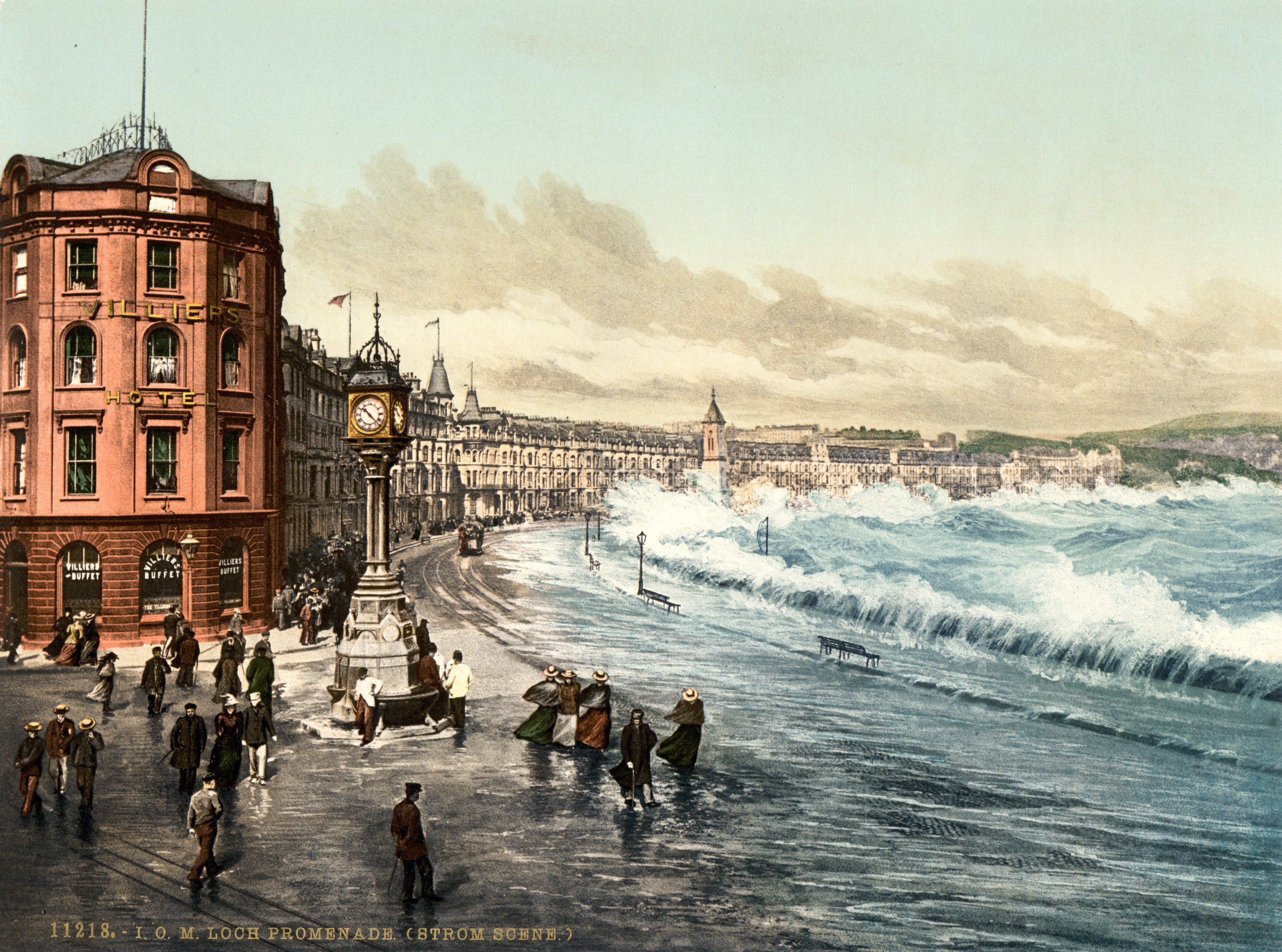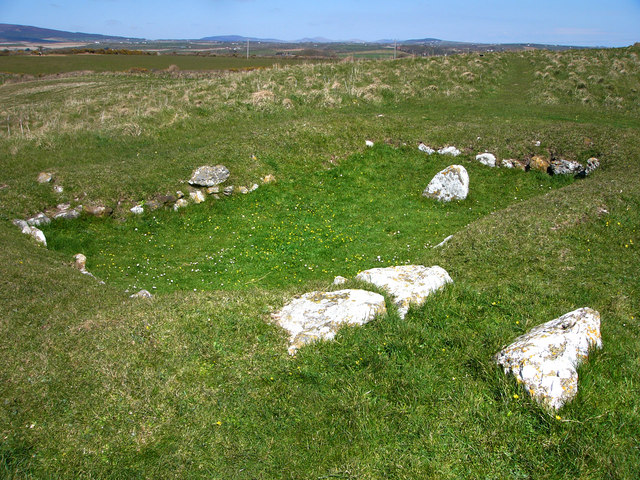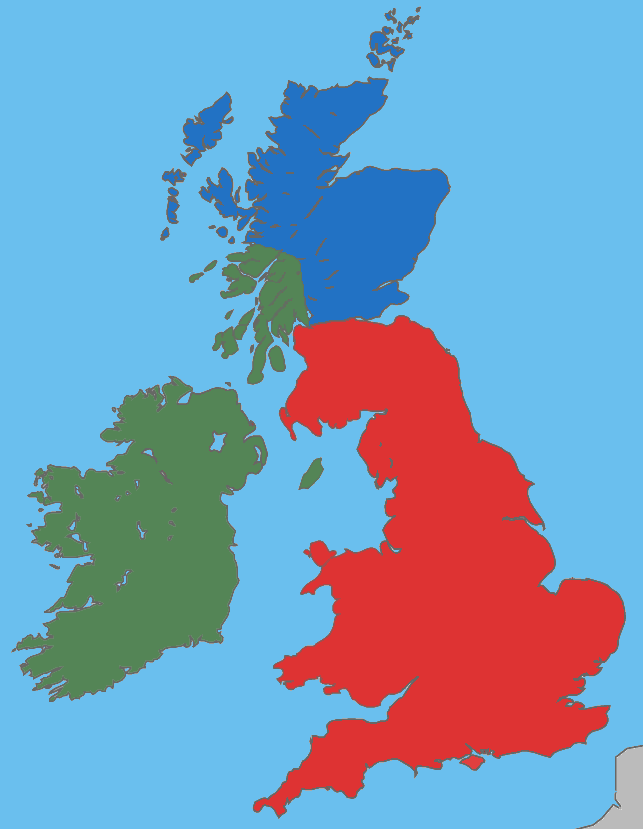|
Knock Y Doonee Ogham Stone
The Knock y Doonee Ogham Stone is an early medieval memorial stone with inscriptions carved in Latin and Ogham. History The stone was discovered in 1911 during the excavation of a chapel at Knock y Doonee in the parish of Andreas on the Isle of Man. A Viking boat burial was later discovered at this site in 1927, one of the two that have been excavated on the Isle of Man. The other is at Balladoole. The stone was later moved to Castle Rushen, and by 1945 it had been moved to its current location at the Manx Museum in Douglas where it has the catalogue number "MM 5". The stone is made from 'clay slate', and is believed to have originated from hills six miles to the south of the site where it was found. It has the designation CIIC 500 in R. A. Stewart Macalister's ''Corpus Inscriptionum Insularum Celticarum'' (1945). Inscription The Latin and Ogham inscriptions are dated to the 5th or early 6th century, and both commemorate a person named Ammecatus son of Rocatus. The Lati ... [...More Info...] [...Related Items...] OR: [Wikipedia] [Google] [Baidu] |
Isle Of Man
) , anthem = " O Land of Our Birth" , image = Isle of Man by Sentinel-2.jpg , image_map = Europe-Isle_of_Man.svg , mapsize = , map_alt = Location of the Isle of Man in Europe , map_caption = Location of the Isle of Man (green) in Europe (dark grey) , subdivision_type = Sovereign state , subdivision_name = United Kingdom , established_title = Norse control , established_date = 9th century , established_title2 = Scottish control , established_date2 = 2 July 1266 , established_title3 = English control , established_date3 = 1399 , established_title4 = Revested into British Crown , established_date4 = 10 May 1765 , official_languages = , capital = Douglas , coordinates = , demonym = Manx; Manxman (plural, Manxmen); Manxwoman (plural, Manxwomen) , ethnic_groups = , ethnic_groups_year = 2021 , ethnic_groups_ref = Official census statistics provided by Statistics Isle of Man, Isle of Man Government: * * , religion = , religion_year = 2021 , religi ... [...More Info...] [...Related Items...] OR: [Wikipedia] [Google] [Baidu] |
Andreas (parish)
Andreas ( or ; gv, Skeerey Andreas) is one of the seventeen parishes of the Isle of Man. It is located in the north of the island (part of the traditional ''North Side'' division) in the sheading of Ayre. The main settlement in the parish in the village of Andreas, which is also known as Kirk Andreas. History There are several ancient monuments and sites located in the parish of Andreas. Ballavarry Burial Mound is a Bronze Age burial mound found a short distance outside of the village of Andreas. Knock y Doonee is a significant historical and archaeological site in Andreas. Archaeological excavations on the area have uncovered a bilingual ogham stone in Latin and Ogham; a Christian keeill (a small chapel); a Christian carved stone cross; and a Viking Age boat burial. Severacarved stone crossesand slabs have been discovered in Andreas. Although many of the crosses are extant only as fragments and are located in the Manx Museum, ''Thorwald's Cross'' for example can be vi ... [...More Info...] [...Related Items...] OR: [Wikipedia] [Google] [Baidu] |
Manx Museum
The Manx Museum (Thie Tashtee Vannin) in Douglas, Isle of Man is the national museum of the Isle of Man. It is run by Manx National Heritage. In general, the museum covers 10,000 years the history of the Isle of Man from the Stone Age to the modern era. The museum serves as headquarters of Manx National Heritage. The museum bears no relation to the institution with the same name founded by Trevor Ashe in 1825. History The Manx Museum and Ancient Monuments Act of 1886 led to the creation of a national museum for the Isle of Man with the aim of preserving the island's cultural and historical heritage. Although there had previously been an institution on the Isle of Man named the ''Manx Museum,'' founded by entrepreneur, author, and publisher Trevor Ashe in 1825, it has no relation to the Manx Museum run by Manx National Heritage. The Manx Museum is partially housed in the original Noble's Hospital building. The site on Crellin's Hill in Douglas was bequeathed by Rebecca Noble, ... [...More Info...] [...Related Items...] OR: [Wikipedia] [Google] [Baidu] |
Douglas, Isle Of Man
Douglas ( gv, Doolish, ) is the capital and largest town of the Isle of Man, with a population of 26,677 (2021). It is located at the mouth of the River Douglas, and on a sweeping bay of . The River Douglas forms part of the town's harbour and main commercial port. Douglas was a small settlement until it grew rapidly as a result of links with the English port of Liverpool in the 18th century. Further population growth came in the following century, resulting during the 1860s in a staged transfer of the High Courts, the Lieutenant Governor's residence, and finally the seat of the legislature, Tynwald, to Douglas from the ancient capital, Castletown. The town is the Island's main hub for business, finance, legal services, shipping, transport, shopping, and entertainment. The annual Isle of Man TT motorcycle races start and finish in Douglas. History Early history In the absence of any archaeological data, the origins of the town may be revealed by analysis of the origin ... [...More Info...] [...Related Items...] OR: [Wikipedia] [Google] [Baidu] |
Latin Script
The Latin script, also known as Roman script, is an alphabetic writing system based on the letters of the classical Latin alphabet, derived from a form of the Greek alphabet which was in use in the ancient Greece, Greek city of Cumae, in southern Italy (Magna Grecia). It was adopted by the Etruscan civilization, Etruscans and subsequently by the Ancient Rome, Romans. Several Latin-script alphabets exist, which differ in graphemes, collation and phonetic values from the classical Latin alphabet. The Latin script is the basis of the International Phonetic Alphabet, and the 26 most widespread letters are the letters contained in the ISO basic Latin alphabet. Latin script is the basis for the largest number of alphabets of any writing system and is the List of writing systems by adoption, most widely adopted writing system in the world. Latin script is used as the standard method of writing for most Western and Central, and some Eastern, European languages as well as many languages ... [...More Info...] [...Related Items...] OR: [Wikipedia] [Google] [Baidu] |
Ogham
Ogham (Modern Irish: ; mga, ogum, ogom, later mga, ogam, label=none ) is an Early Medieval alphabet used primarily to write the early Irish language (in the "orthodox" inscriptions, 4th to 6th centuries AD), and later the Old Irish language ( scholastic ogham, 6th to 9th centuries). There are roughly 400 surviving orthodox inscriptions on stone monuments throughout Ireland and western Britain, the bulk of which are in southern Munster. The largest number outside Ireland are in Pembrokeshire, Wales. The vast majority of the inscriptions consist of personal names. According to the High Medieval '' Bríatharogam'', the names of various trees can be ascribed to individual letters. For this reason, ogam is sometimes known as the Celtic tree alphabet. The etymology of the word ''ogam'' or ''ogham'' remains unclear. One possible origin is from the Irish ''og-úaim'' 'point-seam', referring to the seam made by the point of a sharp weapon. Origins It is generally thought that ... [...More Info...] [...Related Items...] OR: [Wikipedia] [Google] [Baidu] |
Knock Y Doonee
Knock y Doonee (also spelled as Knock-e-Dhooney) is a significant historical and archaeological site in the parish of Andreas on the northern coast of the Isle of Man. The site has been in ritual use for centuries. Archaeological excavations have uncovered a Christian keeill (a small chapel) with a bilingual ogham stone and a Christian carved stone cross; and on a nearby hilltop a Viking Age boat burial. Archaeological sites Two distinct archaeological sites have been excavated at Knock y Doonee. The Keeill site was investigated in 1911 by the Manx Archaeological Survey, led by P. M. C. Kermode. In 1927 Kermode, now director of the Manx Museum, returned to Knock y Doonee to excavate the hill-top mound some 300m away within which a Viking Age boat burial and associated grave goods were discovered. Knock y Doonee Keeill The remains of an ancient keeill were discovered at this site. A keeill is a small simple chapel, most of which were built between the 6th and 12th centurie ... [...More Info...] [...Related Items...] OR: [Wikipedia] [Google] [Baidu] |
Balladoole
Chapel Hill, Balladoole is a significant historical and archaeological site in Arbory on the Isle of Man. The site is a short distance from Castletown in the south of the Island. It is located on a small hilltop overlooking the coast. Balladoole has undergone extensive archaeological excavations in the 20th century, most notably in 1944-1945 by German archaeologist Gerhard Bersu who was interned on the Isle of Man during World War II. The site has been in ritual use for millennia: archaeological excavations of the hilltop have uncovered Mesolithic remains; a Bronze Age cist; an Iron Age hill fort; a Christian keeill (a small chapel); a Christian burial ground, and a Viking Age boat burial. Excavations The first major excavation of the site took place towards the end of World War II. German archaeologist Gerhard Bersu and his wife were interned on the Isle of Man in 1940 as "enemy aliens". Bersu was permitted to use a team of internees to conduct excavations of significant ... [...More Info...] [...Related Items...] OR: [Wikipedia] [Google] [Baidu] |
Castle Rushen
Castle Rushen ( gv, Cashtal Rosien) is a medieval castle located in the Isle of Man's historic capital, Castletown, in the south of the island. It towers over the Market Square to the south-east and the harbour to the north-east. The castle is amongst the best examples of medieval castles in Europe and is still in use as a museum and educational centre. Construction Construction is thought to have taken place during the 10th-century reigns of rulers of the Isle of Man – the Kings of Mann and the Isles. An old oak beam was found in the castle in the mid-19th century that contained the date 947. The last such King of Man, Magnús Óláfsson, is recorded in the '' Chronicle of Mann'' to have died at the castle in 1265. The original Castle Rushen consisted of a central square stone tower, or keep. The site was fortified to guard the entrance to the Silver Burn. The castle was developed by successive rulers of Man between the 13th and 16th centuries. The limestone walls dom ... [...More Info...] [...Related Items...] OR: [Wikipedia] [Google] [Baidu] |
Celtic Languages
The Celtic languages (usually , but sometimes ) are a group of related languages descended from Proto-Celtic. They form a branch of the Indo-European language family. The term "Celtic" was first used to describe this language group by Edward Lhuyd in 1707, following Paul-Yves Pezron, who made the explicit link between the Celts described by classical writers and the Welsh and Breton languages. During the 1st millennium BC, Celtic languages were spoken across much of Europe and central Anatolia. Today, they are restricted to the northwestern fringe of Europe and a few diaspora communities. There are six living languages: the four continuously living languages Breton, Irish, Scottish Gaelic and Welsh, and the two revived languages Cornish and Manx. All are minority languages in their respective countries, though there are continuing efforts at revitalisation. Welsh is an official language in Wales and Irish is an official language of Ireland and of the European Union ... [...More Info...] [...Related Items...] OR: [Wikipedia] [Google] [Baidu] |
Primitive Irish
Primitive Irish or Archaic Irish ( ga, Gaeilge Ársa), also called Proto-Goidelic, is the oldest known form of the Goidelic languages. It is known only from fragments, mostly personal names, inscribed on stone in the ogham alphabet in Ireland and western Great Britain between the 4th and the 6th century AD. Characteristics Transcribed ogham inscriptions, which lack a letter for , show Primitive Irish to be similar in morphology and inflections to Gaulish, Latin, Classical Greek and Sanskrit. Many of the characteristics of modern (and medieval) Irish, such as initial mutations, distinct "broad" and "slender" consonants and consonant clusters, are not yet apparent. More than 300 ogham inscriptions are known in Ireland, including 121 in County Kerry and 81 in County Cork, and more than 75 found outside Ireland in western Britain and the Isle of Man, including more than 40 in Wales, where Irish colonists settled in the 3rd century, and about 30 in Scotland, although some of these ... [...More Info...] [...Related Items...] OR: [Wikipedia] [Google] [Baidu] |
Brittonic Languages
The Brittonic languages (also Brythonic or British Celtic; cy, ieithoedd Brythonaidd/Prydeinig; kw, yethow brythonek/predennek; br, yezhoù predenek) form one of the two branches of the Insular Celtic languages, Insular Celtic language family; the other is Goidelic languages, Goidelic. The name ''Brythonic'' was derived by Wales, Welsh Celtic studies, Celticist John Rhys from the Welsh language, Welsh word , meaning Ancient Britons as opposed to an Anglo-Saxons, Anglo-Saxon or Gaels, Gael. The Brittonic languages derive from the Common Brittonic language, spoken throughout Great Britain during the British Iron Age, Iron Age and Roman Britain, Roman period. In the 5th and 6th centuries emigrating Britons also took Brittonic speech to the continent, most significantly in Brittany and Britonia. During the next few centuries the language began to split into several dialects, eventually evolving into Welsh language, Welsh, Cornish language, Cornish, Breton language, Breton, Cumbri ... [...More Info...] [...Related Items...] OR: [Wikipedia] [Google] [Baidu] |



_(14760479206).jpg)


